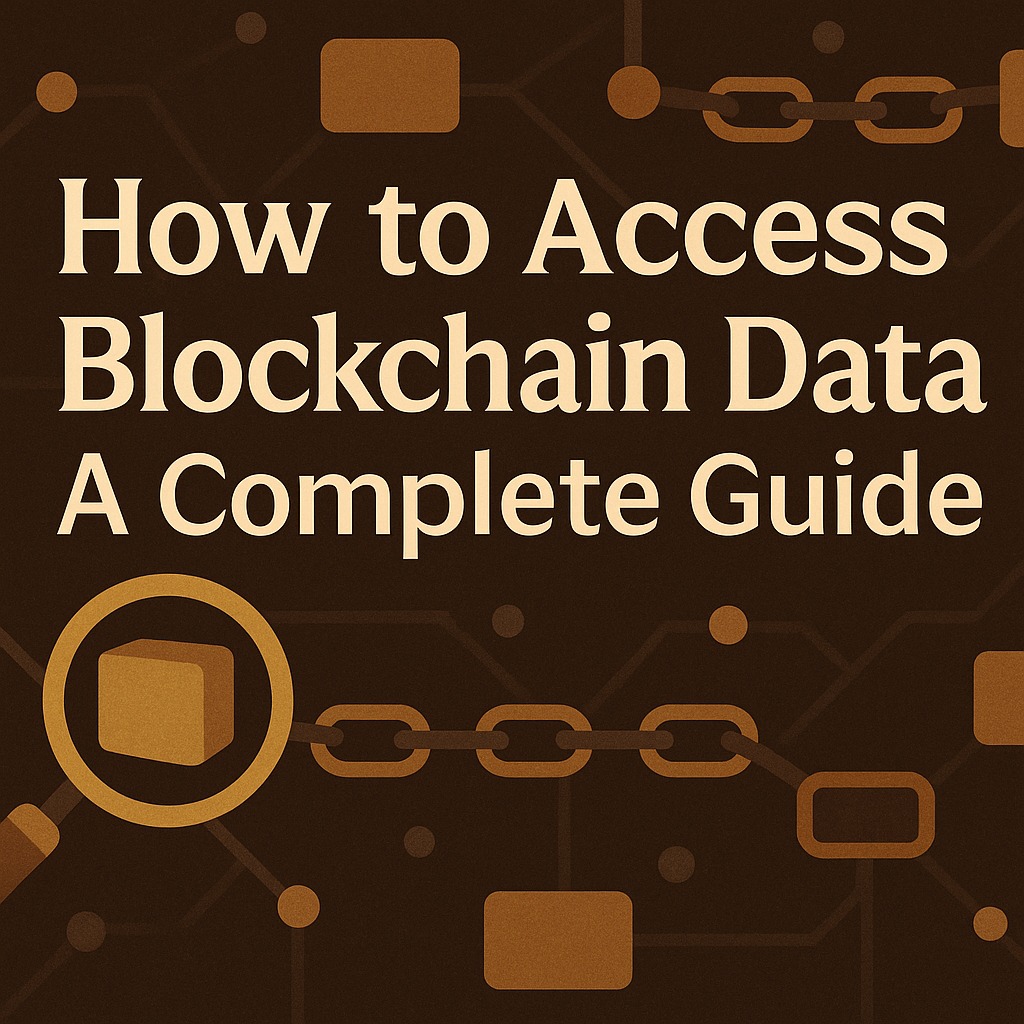Blockchain is open by design. Every transaction, every smart contract, every token transfer is recorded forever on-chain. But here’s the paradox, although the data is public, more than 99% of people cannot read it directly. To most, it looks like endless lines of numbers, hashes, and codes. Without the right tools, blockchain is like staring at a book written in a foreign language.
This guide breaks down how to access blockchain data in a way anyone can understand. We’ll cover the basics, explain the tools (like blockchain explorers), and show how visualization transforms complex records into insights you can actually use. Whether you’re a beginner curious about Bitcoin, a developer building on Ethereum, or an investor analyzing DeFi, this guide is for you.
What is Blockchain Data?
Blockchain data is the digital trail left behind by activity on the chain. Every time someone sends coins, creates an NFT, or runs a smart contract, the network records:
- Transactions (who sent what to whom)
- Blocks (groups of transactions added to the chain)
- Smart contracts (code that executes automatically)
- Addresses (unique wallet identifiers)
This data is permanent, transparent, and decentralized. But because it’s designed for machines, not humans, it needs interpretation.
Why Accessing Blockchain Data is Hard
1. Raw Format
A typical transaction hash looks like this: 0x5a0b54d5dc17e0aadc383d2db43b0c.... Without context, it means nothing.
2. Volume
Popular blockchains like Ethereum process millions of transactions daily. Manually reading them is impossible.
3. Complexity
Smart contracts generate events, interactions, and logs that are even harder to follow than simple payments.
This is why tools like explorers and visualization platforms are essential.
Tools to Access Blockchain Data
1. Blockchain Explorers
Explorers are like search engines for blockchain. You enter a wallet address, transaction hash, or block number and see:
- Transaction details
- Wallet balances
- Gas fees
- Contract interactions
Examples: Etherscan (Ethereum), Blockchain.com (Bitcoin), Solscan (Solana).
2. APIs
For developers, APIs provide structured access to blockchain data. Instead of clicking through a website, you can:
- Pull live transaction data
- Analyze DeFi contracts
- Monitor NFT trades
3. Visualization Tools
Visualization platforms like Hindsight VIP Visual Explorer take it a step further. Instead of numbers, you see:
- Shapes and colors representing wallets and contracts
- Flows and arrows showing transactions
- Alerts highlighting suspicious patterns
For beginners, visualization is the easiest way to “read” blockchain without needing technical knowledge.
Step-by-Step: How to Access Blockchain Data
- Choose a Blockchain Explorer – Start with Etherscan if you’re exploring Ethereum.
- Search by Address or Hash – Copy a wallet address or transaction ID into the search bar.
- Read the Details – Look for sender, receiver, amount, and timestamp.
- Check Contract Activity – If it’s a smart contract, explore the “Events” or “Logs” tab.
- Use Visualization – Switch to tools like Hindsight to see patterns instead of raw data.
Benefits of Accessing Blockchain Data
- Transparency – See where funds are moving.
- Security – Spot suspicious behavior early.
- Education – Learn how blockchain really works.
- Investment Insights – Track activity in DeFi, NFTs, and DAOs.
As the World Economic Forum highlights, open blockchain data can build trust when presented clearly (source).
Real-World Applications
- Fraud Detection: Exchanges monitor flows to spot hacks.
- NFT Marketplaces: Creators check royalty payments.
- DeFi Users: Investors track liquidity pool activity.
- Regulators: Agencies follow suspicious transfers to enforce compliance.
These examples show why learning to access blockchain data is critical, not just for developers, but for anyone participating in Web3.
Challenges and Risks
- Data Overload: Billions of transactions can overwhelm explorers.
- User Error: Copying the wrong address leads to mistakes.
- Privacy Concerns: Public data means wallets can be traced.
Visualization tools reduce these risks by highlighting what’s important and hiding noise.
The Future of Blockchain Data Access
- AI-Powered Tools: Machine learning will help identify fraud patterns.
- Cross-Chain Dashboards: Unified platforms will show activity across multiple blockchains.
- Simplified Interfaces: Expect explorers that feel more like apps than spreadsheets.
According to Forbes, the future of blockchain adoption depends on tools that make data simple and trustworthy (source).
Conclusion: Accessing Blockchain Data Made Simple
Blockchain is open to all, but without the right tools, it’s unreadable. With explorers, APIs, and especially visualization, anyone can unlock blockchain’s insights. Accessing blockchain data is not just a developer’s task, it’s a skill for every user in the digital economy.
